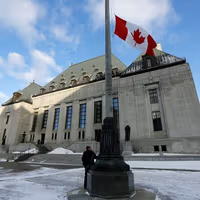US Affirms Continued Presence Of Forces In Middle East Amid Iran Threats

The US Defense Department has said that there is still a significant and ongoing threat to commercial ships in the Persian Gulf and the Strait of Hormuz off the coast of Iran.

The US Defense Department has said that there is still a significant and ongoing threat to commercial ships in the Persian Gulf and the Strait of Hormuz off the coast of Iran.
In a statement on Tuesday, Sabrina Singh, Deputy Pentagon Spokesperson emphasized Iran's ongoing threat to commercial ships and commented on the substantial contingent of US forces stationed in the Middle East. "As long as there remains a need for these forces to be in the region, they're going to stay there,” she said.
She also referred to the IRGC presence in the waters of the region as harassment. “Over the past few weeks, we've seen harassment from IRGC-backed groups over commercial ships." Singh said, "We have not seen that threat drop, I would say, so we haven't seen a reason to move our forces out."
In July, the US Defense Secretary announced a strategic response to Iran's attempts to seize ships in the Persian Gulf and the Strait of Hormuz, which involves deploying naval and ground forces, including F-35 and F-16 fighter jets and missile-equipped destroyers.
Citing data, US authorities said that over the past two years, Iran has engaged in a series of disruptive activities targeting nearly 20 internationally-registered commercial ships.
Since 2019, Iran has consistently targeted commercial ships and oil tankers in the Persian Gulf, including seizing two more oil tankers and attempting to commandeer two other vessels.
The strategic significance of the Strait of Hormuz in global oil transit is undeniable, with approximately 20% of the world's crude oil traversing this critical chokepoint en route to international markets.
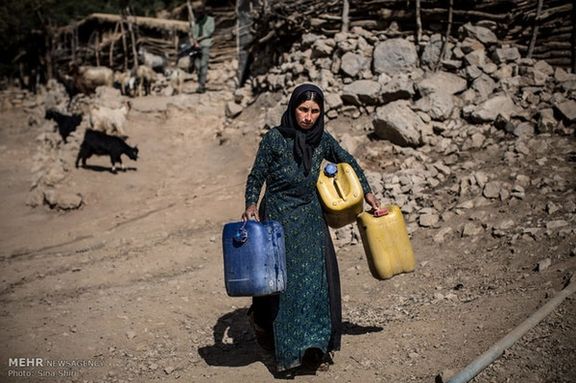
While the head of Iran's wealth fund issued a dire warning about future, the president pledged to provide "free" water, electricity, and gas to low-income households.
President Ebrahim Raisi made the claim during a press conference on Tuesday, stating "Providing free water, electricity, and gas to low-income families is on the government's agenda."
The president also claimed that "health insurance has been provided for six million people in the country for free."
"The government is cares about paying subsidies, providing housing for the deprived strata, as well as allocating land and providing facilities to the low-income households," he said, adding that “we have been committed to what we have said in the elections, and we will be; we have not forgotten any of those promises, and we will not forget them.”
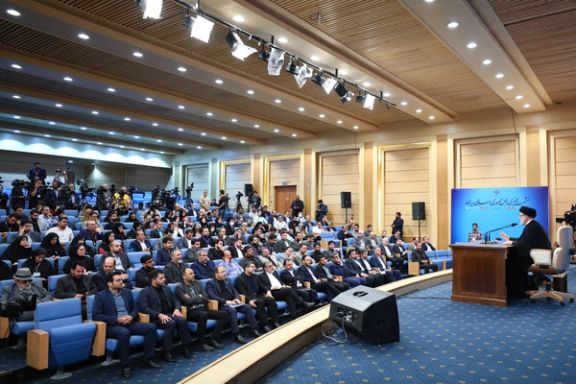
A day earlier, Mehdi Ghazanfari, the head of Iran's National Development Fund, warned that "people are worried about the day when we become servants of neighboring countries" because they are progressing rapidly, and Iran is not.
Highlighting that the regime only attaches importance to "military strength" as an element of national power, he warned that if Iran neglects "economic development coupled with high growth rates" it might become a country "devoid of its human resources and investment opportunities."
Ghazanfari said a new type of colonialism may take place in Iran in the face of prosperous and wealthy neighboring nations. “If the current trend persists in Iran, it may become a country in the future that imports gas from Turkmenistan, wheat from Saudi Arabia, depends on Oman and Qatar for medical services and Qatar, and on the UAE for maritime and aerial logistics,” he warned.
Raisi’s remarks were reminiscent of promises by the Islamic Republic’s founder Ruhollah Khomeini, who famously promised Iranians free electricity, water and a cash share of the oil export income in his first speech upon arrival to the country after exile during the 1979 revolution. Khomeini made a variety of promises to Iranians for his Islamic regime such as a popularly elected governments that would represent the people without the interference of the clergy in addition to abolishing homelessness.

Since the historic speech in February 1979, Iranian officials have made similar promises over the years, with former President Hassan Rouhani even claiming that he had managed to achieve these goals. Rouhani claimed in December 2020 that his government had realized Khomeini’s promise, providing low-income strata of the society with water, gas, and electricity free-of-charge.
Iran has survived on oil export revenues during 44 years of clerical rule and has used the income to provide tens of billion of dollars in subsidies to the population each year, while maintaining an unproductive, government controlled economy. The lack of planned and sustained economic growth, a closed economy not attractive for foreign investment and various foreign economic sanctions have led to the current crisis marked by very high inflation, low economic growth and increasing poverty.
Rouhani officials repeated bogus claims of more subsidies, with his government spokesman Ali Rabiei saying that some 35 percent of the country’s population – about 30 million people – had access to free utilities. “We supplied people with free gas, but we became self-sufficient in gas production beforehand so that we can meet the domestic demand in winter and even be able to export,” he said in 2020, a claim that contradicted reality, as more than 30 million Iranians live below the poverty line.
Elsewhere in his press conference, Raisi made other claims about the reduction in inflationary pace, a higher growth rate, and reduction in the unemployment rate.

Over the past few years, many economists have warned about capital flight and the emigration of elites and skilled workers from Iran due to the Islamic Republic's policies.
The cost of living in Iran, including electricity, water, and gas bills, has consistently risen over the years and the majority of Iranians have fallen into poverty, no longer being able to afford meat and even fruit and vegetables, with consumption dropping by half.
The Islamic Republic has been struggling with high inflation since at least 2019, but the raging inflation in the past Iranian year which ended on March 20, was seriously different from previous years. Currently the official annual inflation rate is nearly 50 percent – the highest rate in Iran for more than 30 years-- but prices for foodstuff are most affected with some categories doubling or tripling in the past 12 months. The devaluation of Iran’s rial from 260,000 per US dollar to about 500,000 this year signals even higher economic woes for the people.

Iran’s regime has always pressured female athletes to abide by strict hijab rules during international games, but many are now refusing to obey despite repercussions.
Just last week, members of Iran's national women's muay thai team boldly challenged the regulations by competing unveiled at the Asian Championships held in Tashkent, Uzbekistan's capital.
This courageous act has triggered an outcry among hardliners, with some officials even disputing the team's official representation of the Islamic Republic. Others are calling on the Ministry of Sports to take decisive action to quell such open defiance.
The government has proposed a bill that, if approved, will impose heavy fines and other punishments on celebrities including athletes who appear unveiled in public.

Over the past few years, several female athletes have chosen to compete unveiled at international events, seeking asylum abroad to avoid being compelled to return to Iran and face punishment. Notably, 19-year-old Dorsa Derakhshani, an International Master and Woman Grandmaster since 2016, was barred from the national team after refusing to wear a headscarf at the 2017 Gibraltar Chess Festival. She was then a temporary resident of Spain.
"Minutes before a match the deputy chairman of the federation would constantly whisper in my ear to be careful not to let my head cover to drop," Parisa Jahanfekrian, former weightlifting champion who is now living in Germany, told Iran International. Once in very warm weather he told me at least ten times to tuck my hair under my head cover only two minutes before the match.
"There, I was constantly thinking about the consequences if my head cover slipped back instead of thinking how to hold the halter and how to carryout my technic," she said.
It was agonizing to conform with all the dos and don'ts that were imposed on female athletes, Jahanfekrian told Iran International, adding that there would always be meetings before international competitions about hijab.

"They demanded that we always was wore a long tunic (called maanto in Iran) and a pullover headscarf with stitched front (called Maghna'e in Iran) when we left our rooms during our stay abroad.
Female athletes who defy hijab rules receive substantial support and are often hailed as heroes by the public. However, they also endure significant pressure from the authorities.
During the anti-government protests of the previous year, climber Elnaz Rekabi made a bold statement by discarding her hijab during the finals of a competition in South Korea, as an act of solidarity with the Woman, Life, Freedom protesters. She received a warm welcome upon her return to Iran after the competition.

Soon after, state media released a video interview with her at the airport arrival hall. In the interview, she referred to her decision to appear without a hijab as "inadvertent." Many speculated that her statements were made under the pressure of regime agents. Social media users criticized the regime's attempts to undermine her convictions, noting that their efforts had ultimately failed.
People on social media said the regime had tried “to break this brave woman,” force her to repudiate her own convictions, and discredit her among hundreds of thousands of young girls who admired her “but as always, they failed.”
The regime has since then been faced with the dilemma of whether to allow women's participation at international competitions and ignore their defiance or keep them home.
The rule is that arms must be always covered to the wrist and legs to the ankle. Roya Mahboodi, an Asian Women’s Arm-Wrestling champion told Etemad daily in June that a government official banned the sport for some period of time because the wrist and a part of the elbow could be seen during matches.
She recounted how wearing a shaal (normal rectangular scarf), which lets more hair to cascade around the face and in the back, was banned whereas maghna'e tightly frames the face and comes down to the chest. Shaal has been the head cover of choice for many Iranian women who do not believe in wearing hijab but have to abide by the hijab rules.

A report released by the Islamic Republic of Iran Customs Administration reveals there has been a decline in the country’s export value of almost $5 billion between March and July 2023.
During this period, which marks the first five months of the Iranian calendar year, the total value of Iran's foreign trade reached $43.5 billion with 55.9 million tons of goods worth $19.3 billion being exported. Although Iran's exports have increased by about 27% compared to the same period last year, non-oil exports have decreased by 8.6% in terms of value.
The report shows that the amount of goods imported into Iran was 14.4 million tons worth $24.2 billion, which had a growth of 2.17% in terms of weight and 7.49% in terms of value. However, Iran's overall trade balance was in deficit of $4.9 billion at the end of these five months.
The main reason for the decrease, according to customs experts, is the decline in the global prices of petrochemical exports, which account for a big share of the Iranian exported output.
According to the customs administration, the main destinations for Iran's exports were China with $5.6 billion, Iraq with $3.5 billion, the United Arab Emirates with $2.3 billion, Turkey with $2.2 billion, and India with $845 million – with these nations accounting for over 75% of weight and approximately 75% of the total export value from March to July.
The geography for imported goods bore a similar profile with the United Arab Emirates at $7.3 billion, China at $7.1 billion, Turkey at $2.5 billion, Germany at $879 million, and India at $813 million.
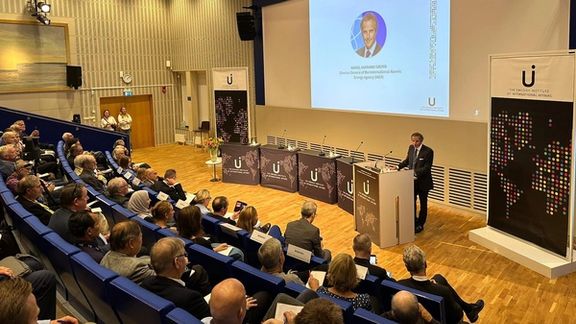
The UN nuclear watchdog says Iran should give assurances to the world that it is not making nuclear weapons as it already has enough material to make several bombs.
Rafael Mariano Grossi, the director general of the International Atomic Energy Agency (IAEA), made the remarks during an event to address the nuclear challenges in Iran, Ukraine and North Korea, hosted by the Swedish Institute of International Affairs on Monday.
The IAEA chief stated that if Iran wants to continue enriching uranium at 60-percent level and higher, “they should know that [they] must give credible assurances to the international community about what they are doing to a stock of highly enriched uranium, for which the needs of a peaceful nuclear program are... not so clear.”

He also expressed concerns about Iran not coming clean about several issues regarding traces of uranium at several older sites. Without explicitly mentioning Israel, he said concerns about Iran’s nuclear program has prompted certain regional countries to hint at “taking some action about what is going on in Iran.”
Israel has repeatedly warned of action against its archnemesis Iran, highlighting that it will not be deterred by the Biden administration's efforts to restart any nuclear deal with Iran. "Israel will do what it needs to do to defend itself by itself against the threat of Iran to annihilate it with nuclear weapons,” Israeli Prime Minister Benjamin Netanyahu said earlier in August. He was referring to a recent unwritten prisoner exchange agreement between Washington and Tehran that many – such as Qatar – hope to expand to a multifaceted accord that contains the regime’s nuclear program and restrains its proxy militias in Iraq and Syria. There are also speculations by Iran-based media about a comprehensive deal in the making with the United States.
Grossi stressed the necessity of “a system, a program, be it JCPOA (Joint Comprehensive Plan of Action) or any other agreement or understanding that would allow the IAEA to have the visibility on Iran’s nuclear program, which is commensurate with the capability that Iran has.”
“Iran has accumulated enough nuclear material for several nuclear weapons,” Grossi said, emphasizing that “I must say Iran does not have nuclear weapons... It is important that we make the distinction between having the capabilities and having nuclear weapons.”
He underscored that it is also important not to lose sight of the fact that “we need to come to a point where Iran’s nuclear program is stabilized and where we have the diplomatic conditions and systems to provide credibility there.”
He added that it is a regrettable situation that the Russian invasion of Ukraine and its consequent worries have pushed concerns about Iran’s nuclear program out of the media and politicians’ attention. “We have not been able to come to a point where we can say that everything is ok.”
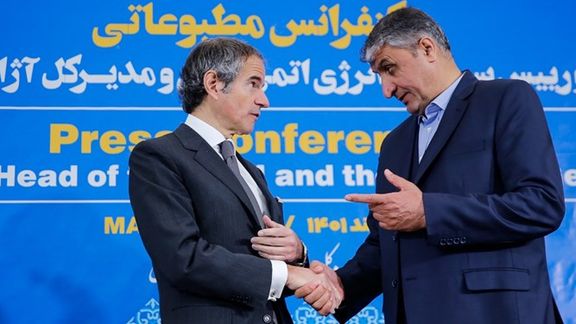
Grossi highlighted that following the US withdrawal from JCPOA under then-president Donald Trump in 2018, Iran gradually abandoned the restraints imposed by the agreement. “At the moment, although this agreement has not been declared as obsolete or dead... it is an empty shell,” he said, noting that “nobody is observing any commitment, provision, or obligation in this agreement.”
He pointed out that Iran is currently enriching uranium at 60 percent, underlining that back in January the IAEA sampled from a cascade of centrifuges at an enrichment plant in Iran and reached to the conclusion that Tehran is enriching at 84 percent. “Weapon level is 90 percent,” he explained.
In February, Iran’s Nuclear Agency Spokesman Behrouz Kamalvandi implicitly accepted the accusation, claiming that finding the highly-enriched uranium particles in the pipes connecting centrifuges was a “normal issue.” “It’s a natural thing in enrichment... The machine is spinning fast. If the amount of the feed decreases for a moment, the enrichment will increase by a few percent,” he said.
Despite recent reports saying that Iran has slowed the buildup of uranium needed for weapons, the regime’s nuclear chief said this week that enrichment is going on in accordance with a domestic law.
Mohammad Eslami, the head of the Atomic Energy Organization of Iran, was referring to the bill passed by the parliament in December 2020, dubbed the “Strategic Action Plan to Lift Sanctions and Protect Iranian Nation's Interest.” The bill obligated the government to step up Iran’s nuclear program and enrich uranium beyond the limits set by the 2015 nuclear agreement until US sanctions would be lifted.

Iran's Minister of Culture has praised President Raisi’s character as a trusted leader of the Islamic Republic, saying he has been “tested across various critical junctures.”
Mohammad-Mehdi Esmaeili, speaking in support of the president, also highlighted that during his youth, Raisi was entrusted with numerous judicial missions by the late Ruhollah Khomeini, the founding leader of the Islamic Republic.
President Raisi is facing domestic and international scrutiny due to his alleged involvement in orchestrating mass prison executions in 1988. Many of these executions targeted individuals associated with opposition groups such as the Mujahedin-e Khalq Organization (MEK), as well as leftist, secular, and Kurdish organizations.
Raisi was a member of an ad hoc judicial committee colloquially known as the "Death Commission." This committee was responsible for deciding the fates of prisoners during summary trials that were held in secret. While Raisi has denied direct involvement in issuing sentences, he has defended the actions against the MEK, citing their history of “violence” as justification.
Notably, some prisoners had been previously released from incarceration, only to be rearrested and retried during the execution spree, which was also referred to as a prison purge. The intention behind these retrials was to ensure prisoners fully denounced the MEK and demonstrated repentance.
The precise number of prisoners executed during the 1988 purges remains uncertain. However, according to Amnesty International, the Iranian authorities "forcibly disappeared" and "extrajudicially executed" an estimated 5,000 individuals between July and September 1988.

